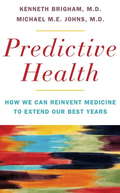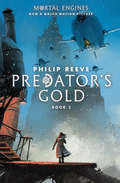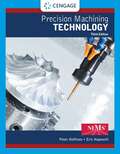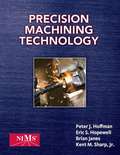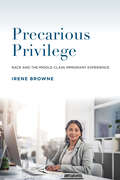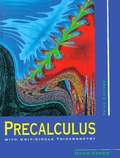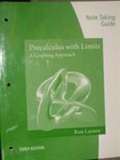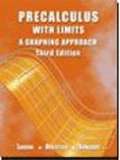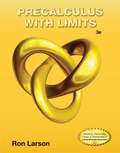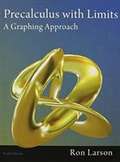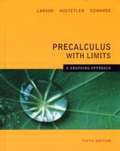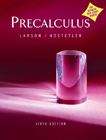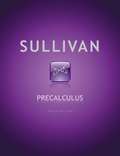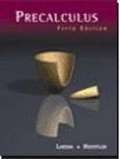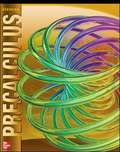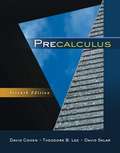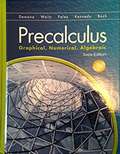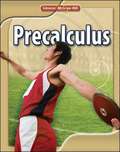- Table View
- List View
Predictive Health: How We Can Reinvent Medicine to Extend Our Best Years
by Kenneth Brigham Michael M. E. JohnsItOCOs no stretch to claim that America is in the midst of a healthcare meltdown. Care is costly and unattainable for many, and often unsatisfactory even for those who can afford treatment. The medical system focuses on treating diseases and their symptoms, and spends so much effortOCoand moneyOCoin the last miserable month of patientsOCO lives that little is left to make sure that the preceding years are as healthful as possible. In "Predictive Health," distinguished doctors Kenneth Brigham and Michael M. E. Johns propose to radically change the current model by restructuring the way patients receive care. They introduce the concept of predictive health, which will turn the existing paradigm on its headOCofocusing on prediction instead of diagnosis, and health rather than disease. Rather than treating symptoms as they arise, doctors practicing predictive health would be involved in a patientOCOs life right from the start. A drop of blood from a tiny heel prick at birth would be run through nanolabs, the resulting information assembled into a picture of the newbornOCOs health. Any potential risk factorsOCorisk for type II diabetes, genetic propensity for obesityOCowould be caught long before they became problematic, and strategies forged for treatment. In essence, health care professionals would become committed consultants, sticking with a patient for the entire course of their lives. The potential savings from this kind of partnership is staggering: the cost of lifelong health care would amount to less than the cost of a month-long stay in an early twenty-first century ICU. Interweaving descriptions of phenomenal advances in science and technology with illustrative anecdotes and personal experiences of the authorsOCO combined century in academic medicine, "Predictive Health" translates the foundations of the new biomedicine into language accessible to a general audienceOCothose who must understand the potential of the unprecedented opportunity confronting us if major change is to happen. The product of a decade-long collaboration between two of the leading figures in predictive health, "Predictive Health" offers a deeply knowledgeable, deeply humane look at the state of medicine today, and the potential for medicine tomorrow.
Predator's Gold: Predator's Gold (Mortal Engines #2)
by Philip ReeveMortal Engines is now a major motion picture produced by Peter Jackson!* "Reeve's [Mortal Engines] remains a landmark of visionary imagination." -- School Library Journal, starred review"A breathtaking work of imagination, Hester Shaw is a heroine for the ages. The moment we finished reading [Mortal Engines] we knew we wanted to make it into a movie." -- Producer Peter JacksonPhilip Reeve's epic city-eat-city adventure series continues with Mortal Engines Book 2: Predator's Gold.With the great Traction City of London completely destroyed, Tom Natsworthy and Hester Shaw travel across the world, trading with other airships and adventuring on the exciting and exotic routes of the Bird Roads. When their little scrapyard aircraft is pursued by rocket-firing gunships, the ice city of Anchorage offers them sanctuary. But as Tom and Hester soon discover, it is no safe refuge. Devastated by plague in recent years and haunted by ghosts and madness, Anchorage is headed for the Dead Continent of North America. It's a perilous course, one that will take them directly into a firestorm of danger and conflict.Mortal Engines is now a major motion picture produced by Peter Jackson!
Precision Machining Technology
by Peter J. Hoffman Eric S. Hopewell Brian Janes Kent M. SharpPRECISION MACHINING TECHNOLOGY has been carefully written to align with the National Institute of Metalworking Skills (NIMS) Machining Level I Standard and to support achievement of NIMS credentials. This new text carries NIMS' exclusive endorsement and recommendation for use in NIMS-accredited Machining Level I Programs. It's the ideal way to introduce students to the excitement of today's machine tool industry and provide a solid understanding of fundamental and intermediate machining skills needed for successful 21st Century careers. With an emphasis on safety throughout, PRECISION MACHINING TECHNOLOGY offers a fresh view of the role of modern machining in today's economic environment. The text covers such topics as the basics of hand tools, job planning, benchwork, layout operations, drill press, milling and grinding processes, and CNC. The companion Workbook/Shop Manual contains helpful review material to ensure that readers have mastered key concepts and provides guided practice operations and projects on a wide range of machine tools that will enhance their NIMS credentialing success.
Precarious Priviledge: Race and the Middle-Class Immigrant Experience
by Irene BrowneIn recent years crackdowns on immigrant labor and a shrinking job market in California, Arizona, and Texas have pushed Latine immigrants to new destinations, particularly places in the American South. Although many of these immigrants work in manufacturing or food-processing plants, a growing number belong to the professional middle class. These professionals find that despite their privileged social class and regardless of their national origin, many non-Latines assume that they are undocumented working-class Mexicans, the stereotype of the “typical Latine.” In Precarious Privilege, sociologist Irene Browne focuses on how first-generation middle-class Mexican and Dominican immigrants in Atlanta respond to this stigmatizing assumption. Browne finds that when asked to identify themselves by race, these immigrants either reject racial identities entirely or draw on belief systems from Mexico and the Dominican Republic that emphasize European-indigenous mixed race identities. When branded as typical Latines in the U.S., Mexican middle-class immigrants emphasize their social class or explain that a typical Latine can be middle-class, while Dominicans simply indicate that they are not Mexican. Rather than blame systemic racism, both Mexican and Dominican middle-class immigrants often attribute misperceptions of their identity to non-Latines’ ignorance or to individual Latines’ lack of effort in trying to assimilate. But these middle-class Latine immigrants do not simply seek to position themselves on par with the U.S.-born white middle class. Instead, they leverage their cosmopolitanism—for example, their multilingualism or their children’s experiences traveling abroad—to engage in what Browne calls “one-up assimilation,” a strategy that aims to position them above the white middle class, who are often monolingual and unaware of the world outside the United States. Middle-class Latines’ cosmopolitanism and valuing of diversity also lead them to have cordial relations with African Americans, but these immigrants do not see themselves as sharing African Americans’ status as oppressed minorities. Although the stereotype of the typical Latine has made middle-class Latine immigrants susceptible to stigma, they insist that this stigma does not play a significant role in their lives. In many cases, they view the stereotype as a minor issue, feel that opportunities for upward mobility outweigh any negative experiences, or downplay racism by emphasizing their class privilege. Browne observes that while downplaying racism may help middle-class Latine immigrants maintain their dignity, it also perpetuates inequality by reinforcing the lower status of working-class undocumented immigrants. It is thus imperative, Browne argues, to repeal harsh anti-immigration policies, a move that will not only ease the lives of the undocumented but also send a message about who belongs in the country. Offering a nuanced exploration of how race, social class, and immigration status intersect, Precarious Privilege provides a complex portrait of middle-class Latine immigrants in the United States today.
Precalculus With Unit-circle Trigonometry
by David CohenIn this new ADVANTAGE SERIES version of David Cohen's PRECALCULUS: WITH UNIT CIRCLE TRIGONOMETRY, THIRD EDITION, Cohen continues to offer a book that is accessible to the student through a careful progression and presentation of concepts, rich problem sets and examples to help explain and motivate concepts, and continual guidance through the challenging work needed to master concepts and skills. This book is identical to PRECALCULUS: A PROBLEMS-ORIENTED APPROACH, Fifth Edition with the exception of the first four chapters on trigonometry. As part of the ADVANTAGE SERIES, this new version will offer all the quality content you've come to expect from Cohen sold to your students at a significantly lower price.
Precalculus with Limits with CalcChat® and CalcView®
by Ron Larson Paul BattagliaNIMAC-sourced textbook
PreCalculus with Limits: A Graphing Approach, Note Taking Guide
by Ron LarsonNIMAC-sourced textbook
Precalculus with Limits: A Graphing Approach (3rd Edition)
by Ron Larson Bruce H. Edwards Robert P. HostetlerIn the Third Edition, we have revised and improved upon many text features designed for this purpose. Our pedagogical approach includes presenting solutions to examples from multiple perspectives-algebraic, graphic, and numeric. The side-by-side format allows students to see that a problem can be solved in more than one way, and to compare the accuracy of the solution methods.
Precalculus with Limits
by Ron Larson David C. FalvoWith the same design and feature sets as the market leading Precalculus, 7/e, this new addition to the Larson/Hostetler Precalculus series provides both students and instructors with sound, consistently structured explanations of the mathematical concepts. Designed for a two-term course, this text contains the features that have made Precalculus a complete solution for both students and instructors: interesting applications, cutting-edge design, and innovative technology combined with an abundance of carefully written exercises. In addition to a brief algebra review and the core precalculus topics, Precalculus with Limits covers analytic geometry in three dimensions and introduces concepts covered in calculus.
Precalculus with Limits: A Graphing Approach (Math Detective Pilot Test)
by Ron Larson David C. FalvoNIMAC-sourced textbook
Precalculus with Limits: A Graphing Approach
by Ron Larson David C. FalvoAs part of the market-leadingGraphing ApproachSeries by Larson, Hostetler, and Edwards,Precalculus with Limits: A Graphing Approach,4/e, provides both students and instructors with a sound mathematics course in an approachable, understandable format. The quality and quantity of the exercises, combined with interesting applications, cutting-edge design, and innovative resources, make teaching easier and help students succeed in mathematics. This edition, intended for precalculus courses that require the use of a graphing calculator, includes a moderate review of algebra to help students entering the course with weak algebra skills. Accessibility to students is achieved through careful writing and design, including same-page examples and solutions, which maximize the readability of the text. Similarly, side-by-side solutions show algebraic, visual, and numeric representations of the mathematics to support students' various learning styles. TheLibrary of Functionsthread throughout the text provides a definition and list of characteristics for each elementary function and compares newly introduced functions to those already presented to increase students' understanding of these important concepts. Technology Supportnotes provided at point-of-use throughout the text guide students to theTechnology Support Appendix,where they can learn how to use specific graphing calculator features to enhance their understanding of the concepts presented. Houghton Mifflin'sEduspaceonline classroom management tool offers instructors the option to assign homework and tests online, provides tutorial support for students needing additional help, and includes the ability to grade any of these assignments automatically.
Precalculus with Limits: A Graphing Approach
by Ron Larson Robert Hostetler Bruce H. Edwards David C. FalvoAs part of the market-leadingGraphing ApproachSeries by Larson, Hostetler, and Edwards,Precalculus with Limits: A Graphing Approach,4/e, provides both students and instructors with a sound mathematics course in an approachable, understandable format. The quality and quantity of the exercises, combined with interesting applications, cutting-edge design, and innovative resources, make teaching easier and help students succeed in mathematics. This edition, intended for precalculus courses that require the use of a graphing calculator, includes a moderate review of algebra to help students entering the course with weak algebra skills. Accessibility to students is achieved through careful writing and design, including same-page examples and solutions, which maximize the readability of the text. Similarly, side-by-side solutions show algebraic, visual, and numeric representations of the mathematics to support students' various learning styles. TheLibrary of Functionsthread throughout the text provides a definition and list of characteristics for each elementary function and compares newly introduced functions to those already presented to increase students' understanding of these important concepts. Technology Supportnotes provided at point-of-use throughout the text guide students to theTechnology Support Appendix,where they can learn how to use specific graphing calculator features to enhance their understanding of the concepts presented. Houghton Mifflin'sEduspaceonline classroom management tool offers instructors the option to assign homework and tests online, provides tutorial support for students needing additional help, and includes the ability to grade any of these assignments automatically.
Precalculus with Limits: A Graphing Approach
by Ron Larson Robert Hostetler Bruce H. Edwards David C. FalvoWritten by the author, this manual offers step-by-step solutions for all odd-numbered text exercises as well as Chapter and Cumulative tests. In addition to Chapter and Cumulative tests, the manual also provides practice tests and practice test answers.
Precalculus with Limits
by Ron Larson Robert Hostetler David C. FalvoWith the same design and feature sets as the market leading Precalculus, 7/e, this new addition to the Larson/Hostetler Precalculus series provides users with sound, consistently structured explanations of the mathematical concepts. This book contains the features that have made Precalculus a complete solution for users: interesting applications, cutting-edge design, and innovative technology combined with an abundance of carefully written exercises. In addition to a brief algebra review and the core precalculus topics, PRECALCULUS WITH LIMITS covers analytic geometry in three dimensions and introduces concepts covered in calculus.
Precalculus (Second Edition)
by Robert BlitzerDesigned to help students transition from intermediate algebra to calculus in the process helping students enhance their problem solving skills and become critical thinkers as they tackle real world problems
Precalculus Advanced Placement
by Ron LarsonWelcome to Pre calculus, Sixth Edition. In this revision we continue to focus on promoting student success, while providing an accessible text that offers flexible teaching and learning options. In keeping with our philosophy that students learn best when they know what they are expected to learn, we have retained the thematic study thread from the Fifth Edition.
Precalculus (9th Edition)
by Michael SullivanMike Sullivan's time-tested approach focuses students on the fundamental skills they need for the course: preparing for class, practicing with homework, and reviewing the concepts. In the Ninth Edition, Precalculus has evolved to meet today's course needs, building on these hallmarks by integrating projects and other interactive learning tools for use in the classroom or online.
Precalculus (5th edition)
by Ron Larson Robert P. HostetlerThis comprehensive book provides complete coverage of the function concept and integrates substantial graphing calculator materials that help students develop insight into mathematical ideas.
Precalculus
by David Cohen Theodore B. Lee David SklarGet a good grade in your precalculus course with PRECALCULUS, Seventh Edition. Written in a clear, student-friendly style, the book also provides a graphical perspective so you can develop a visual understanding of college algebra and trigonometry. With great examples, exercises, applications, and real-life data--and a range of online study resources--this book provides you with the tools you need to be successful in your course.
Precalculus: Graphical, Numerical, Algebraic
by Franklin D. Demana Bert K. Waits Gregory D. FoleyNIMAC-sourced textbook
Precalculus: Graphical, Numerical, Algebraic
by Franklin D. Demana Bert K. Waits Gregory D. Foley Daniel KennedyHigh School Math Textbook
Precalculus
by Glencoe McGraw-Hill StaffGlencoe Precalculus ©2011is a comprehensive program that prepares students to be successful in college or AP Calculus programs. Features of this program include: Chapter 0, Graphing Technology Labs, leveled exercise sets, H. O. T. (Higher-Order Thinking) Problems, and Preparation for AP Calculus lessons within every chapter. Glencoe Precalculus also includes a complete technology suite that contains an online student edition, online teacher edition, Interactive Classroom, Advance Tracker, and ExamView® Assessment Suite.
